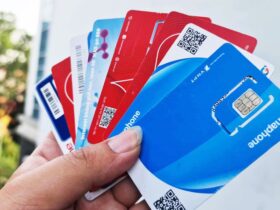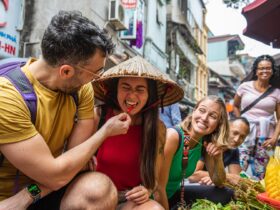Standing in the narrow alley of Hanoi’s Old Quarter, humid air clinging to my skin, I fumbled with the unfamiliar ATM keypad while motorbike horns blared around me. As a first-time visitor to Vietnam, I quickly learned that despite the country’s rapid modernization, cash remains essential for the authentic experiences most travelers seek. Whether you’re planning to sample street food from local vendors, haggle in bustling markets, or stay in charming family-run homestays, understanding how to navigate Vietnam’s ATM system will save you both money and stress.
Why Cash is King in Vietnam
Despite the growth of digital payments in urban areas, Vietnamese dong (VND) is still the primary currency you’ll need for most transactions. During my recent travels throughout the country, I found cash indispensable for:
- Local Markets and Small Businesses: From the floating markets of the Mekong Delta to the hill tribe villages near Sapa, vendors almost exclusively deal in cash.
- Smaller Accommodations: While upscale hotels readily accept credit cards, the charming family-run homestays and local guesthouses that offer the most authentic experiences often require cash payment.
- Avoiding Extra Fees: When credit cards are accepted, many establishments add a 3% surcharge to cover bank fees – a cost easily avoided by paying with dong.
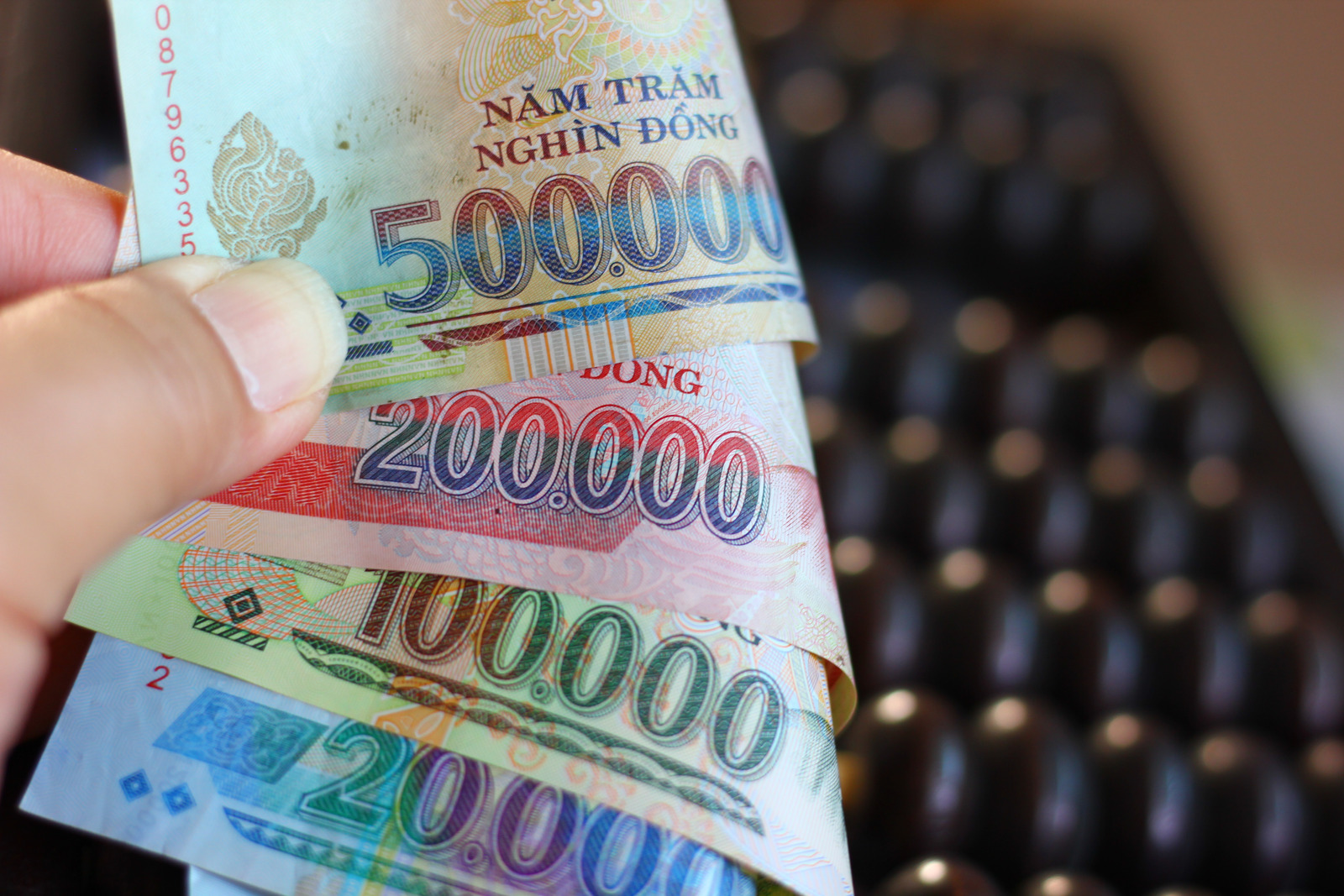
Finding ATMs Across Vietnam
Vietnam’s banking infrastructure has expanded dramatically in recent years. You’ll find ATMs:
- Throughout Major Cities: Ho Chi Minh City, Hanoi, and Da Nang have ATMs on virtually every major street.
- Near Tourist Attractions: Popular destinations like Hoi An Ancient Town and Ha Long Bay are well-served by ATMs.
- In Rural Areas: Banks like Agribank (most prevalent in remote regions), Vietinbank, and BIDV maintain extensive networks even in smaller towns.
When venturing to more remote areas, I recommend using Google Maps to locate nearby ATMs – though be aware that not all machines may be listed. Hotel staff and restaurant employees are also excellent resources for directing you to the closest reliable ATM.
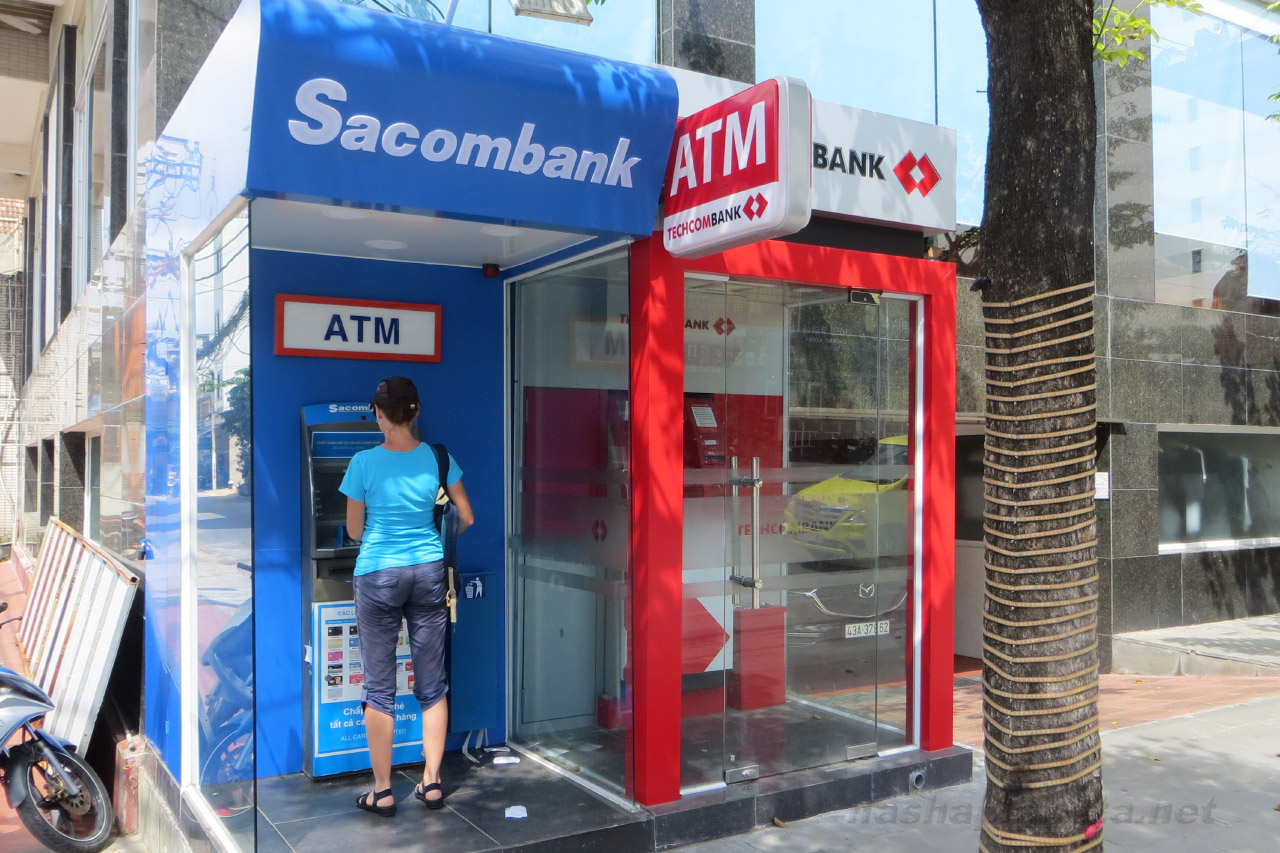
Making Withdrawals: What You Need to Know
A few key points to remember about ATM transactions in Vietnam:
- Currency: ATMs dispense only Vietnamese dong, regardless of your account’s base currency.
- Exchange Rate: The bank operating the ATM determines the exchange rate applied to your withdrawal.
- Card Compatibility: Most machines accept Visa, MasterCard, UnionPay, and JCB cards. Look for corresponding logos on the ATM to ensure compatibility with your card.
Withdrawal Limits and Fees: Bank by Bank
One crucial aspect of using ATMs in Vietnam is understanding the significant variation in withdrawal limits and fees between banks. Based on my experience and research, here’s a breakdown:
Maximum Withdrawal Amounts:
- Local Banks (Lower Limits)
- Vietcombank: 2,000,000 VND (~$80)
- VietinBank: 2,000,000 VND (~$80)
- Agribank: 6,000,000 VND (~$240)
- TPBank: 5,000,000 VND (~$200)
- VP Bank: 5,000,000 VND (~$200)
- International Banks (Higher Limits)
- HSBC: 8,000,000 VND (~$320)
- Citibank: 8,000,000 VND (~$320)
- Commonwealth Bank: 10,000,000 VND (~$400)
- ANZ: 10,000,000 VND (~$400)
Transaction Fees:
- Vietcombank: 50,000 VND (~$2)
- Agribank: 22,000 VND (~$0.90)
- BIDV: 30,000 VND or 3% of withdrawal amount
- Sacombank: 30,000 VND (~$1.20)
- Citibank: 55,000 VND (~$2.20)
- ANZ: 40,000 VND (~$1.60)
Remember that these fees apply per transaction, and your home bank may charge additional international withdrawal fees.
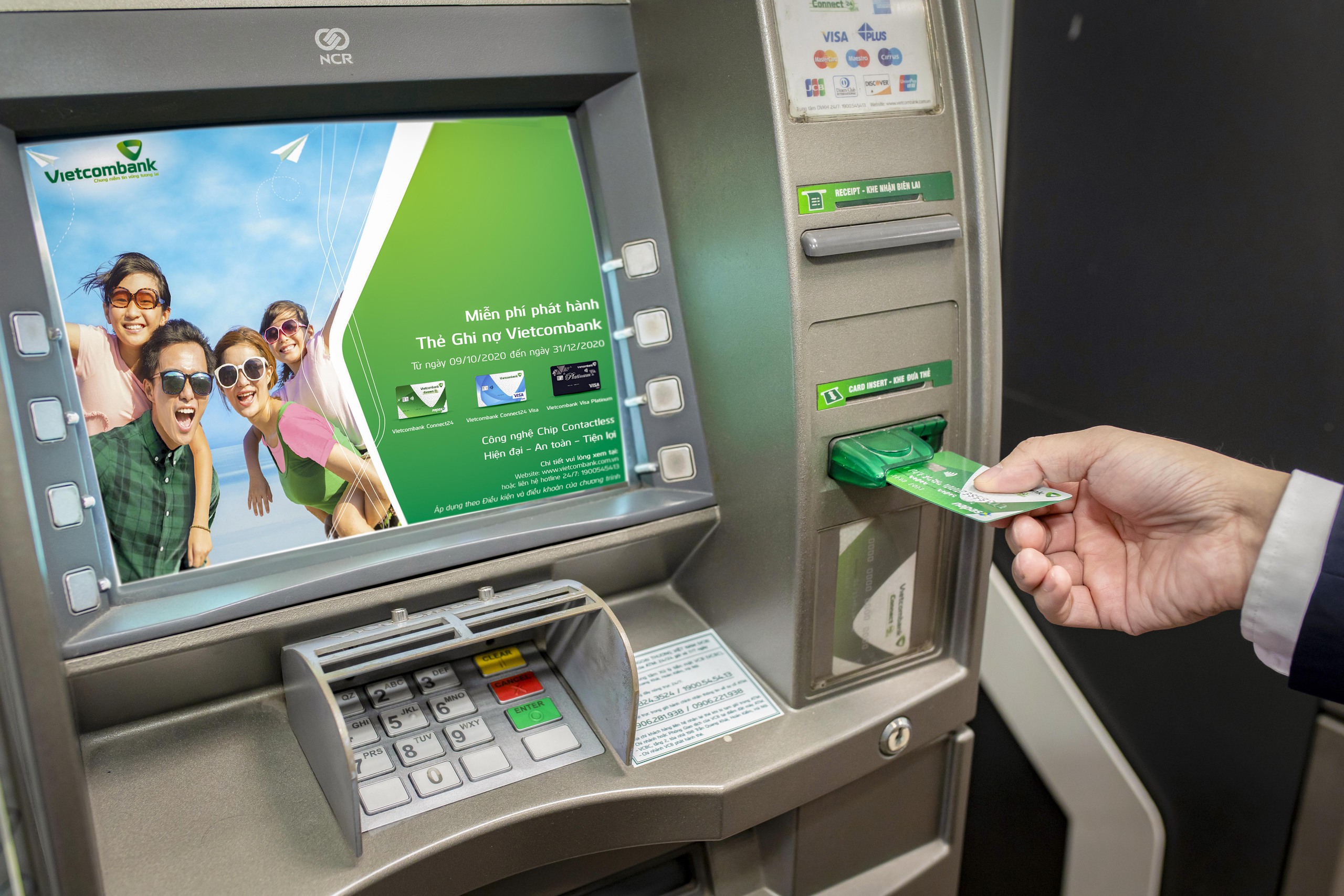
Smart Strategies to Minimize ATM Costs
After several trips across Vietnam, I’ve developed these money-saving tactics:
- Make Larger, Less Frequent Withdrawals: Since fees apply per transaction, withdrawing larger amounts reduces your overall cost. I typically withdrew enough for 5-7 days at once.
- Use Banks with Higher Withdrawal Limits: International banks like ANZ and Commonwealth Bank allow larger withdrawals (up to 10 million VND), making each transaction fee more worthwhile.
- Consider Fee-Free Options:
- Charles Schwab debit cards (for US travelers) offer worldwide ATM fee reimbursement
- WISE multi-currency accounts let you hold Vietnamese dong and withdraw at favorable rates
- Revolut users can get fee-free withdrawals specifically at Eximbank ATMs
- Decline Dynamic Currency Conversion: When prompted to convert your withdrawal “with guarantee” in your home currency, always decline. This ensures your home bank applies the more favorable mid-market exchange rate.
- Try TP Bank and VP Bank: Based on traveler reports, these banks often don’t charge ATM fees and use favorable conversion rates, making them excellent choices when available.
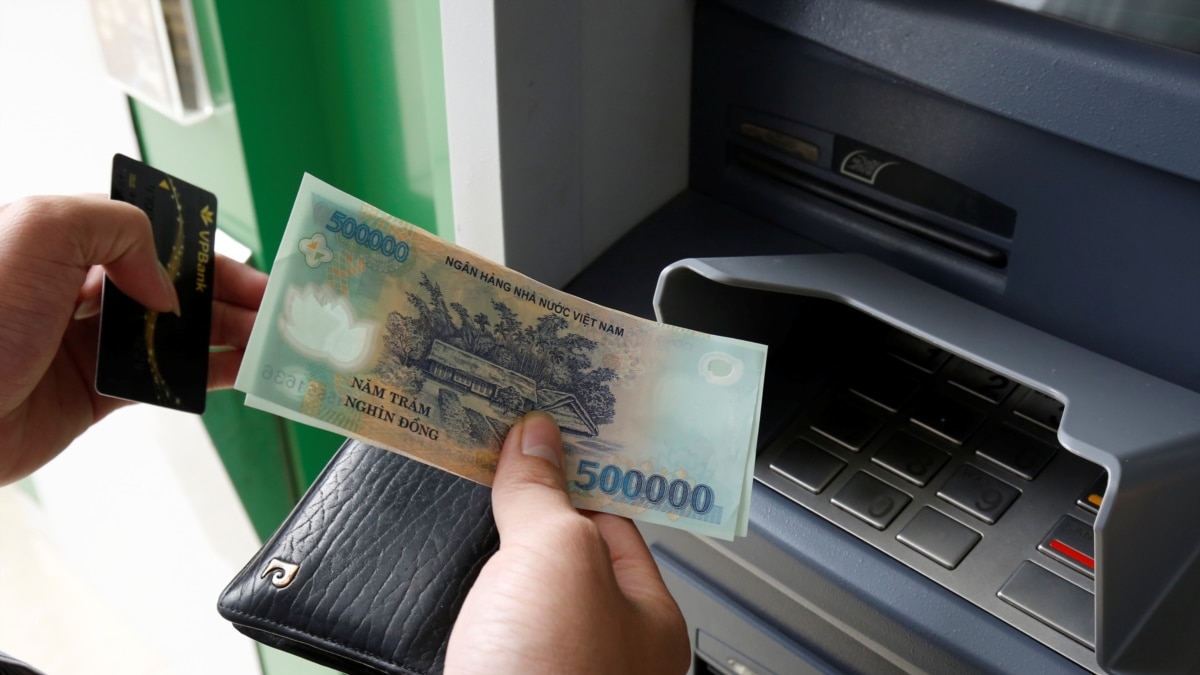
Handling Common ATM Issues
Even the most prepared travelers sometimes encounter ATM problems. Here’s how to handle common issues:
- Card Retained by Machine: Immediately call the bank’s hotline (usually displayed on the ATM) or take a photo of the ATM number and location, then visit the bank branch. During banking hours, most cards can be retrieved with proper identification.
- Funds Deducted But No Cash Dispensed: This rare but stressful situation requires documentation. Take a photo of the ATM, keep any receipt, and report the issue to both your home bank and the Vietnamese bank operating the machine.
- Insufficient Funds Messages: Often this indicates you’ve exceeded the machine’s withdrawal limit rather than an issue with your account. Try a smaller amount or switch to a different bank’s ATM.
Alternative Payment Options
While cash remains essential, you do have other options:
- Credit Cards: Widely accepted at higher-end establishments in cities and tourist areas, though often with a 3% surcharge. I regularly used my credit card at upscale restaurants and hotels without issues.
- Money Transfer Services: Services like Remitly can be useful for paying tour operators or hotels in advance.
Important Tips for Vietnam Travelers
- Plan Ahead for Tet Holiday: During Vietnamese New Year (Tet), banks close and ATMs frequently run out of cash as locals withdraw funds for celebrations. If your trip coincides with Tet, withdraw extra cash beforehand.
- Safety First: While Vietnam is generally safe for travelers, take standard precautions when using ATMs. Choose well-lit locations, be aware of your surroundings, and store cash securely.
- Denominations Matter: ATMs typically dispense large bills (200,000 or 500,000 VND notes). Small local vendors may struggle to make change, so break larger bills at hotels or larger stores when possible.
Final Thoughts
Navigating Vietnam’s ATM system initially seemed daunting, but with some preparation, it became a minor detail in an otherwise extraordinary travel experience. By making strategic withdrawals and knowing which banks offer the best value, you’ll spend less time worrying about money and more time immersing yourself in Vietnam’s rich culture, breathtaking landscapes, and unforgettable cuisine.
Remember that banking policies change frequently, so verify current limits and fees closer to your travel date. With this knowledge in hand, you’re well-prepared to handle your financial needs while exploring one of Southeast Asia’s most fascinating destinations.
